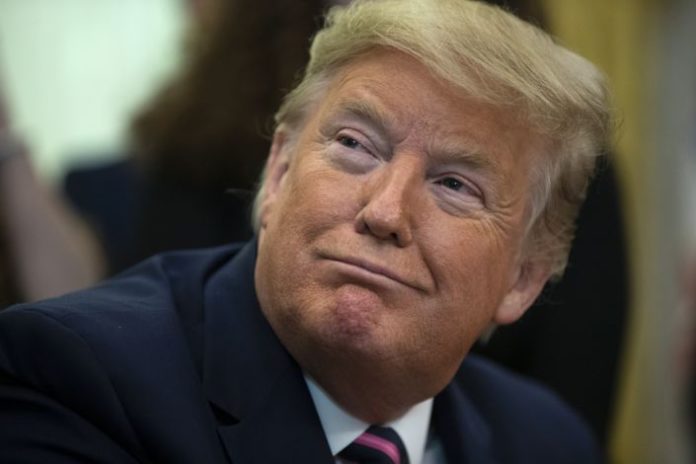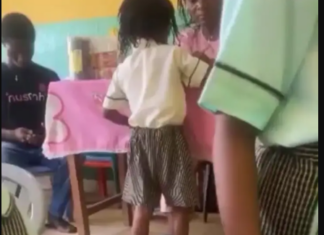By Jeph Ajobaju, Chief Copy Editor
Cultural factors and high rates of a raft of health problems, without access to health care, plus poverty, have combined to accelerate coronavirus infections and deaths among 5.2 million Native Americans.
The United States leads in all the headline coronavirus statistics worldwide, and its death figure more than doubles that of Italy, the second country hit hardest.
Globally, the pandemic has soared to 3,151,603 cases, with 218,490 deaths and 964,513 recovered, according to data compiled by worldometers.info
The top 12 countries most affected are
US – 1,035,765 (cases), 59,266 (deaths)
Italy – 201,505 (cases), 27,359 (deaths)
Spain – 232,128 (cases), 23,822 (deaths)
France – 165,911 (cases), 23,660 (deaths)
UK – 161,145 (cases), 21,678 (deaths)
Belgium – 47,859 (cases), 7,501 (deaths)
Germany – 160,059 (cases), 6,314 (deaths)
Iran – 92,657 (cases), 5,957 (deaths)
Brazil – 73,235 (cases), 5,083 (deaths)
China – 82,858 (cases), 4,633 (deaths)
Netherlands – 38,416 (cases), 4,566 (deaths)
Canada – 50,026 (cases), 2,859 (deaths)
The US has the highest rate of new infections (19,522), more than triple those of Russia (5,841), which ranks second. China, where the pandemic began in December 2019, has 22 new cases.
Worst yet to come, says WHO
World Health Organisation (WHO), Director-General Tedros Adhanom Ghebreyesus, has warned that the “worst” of the novel coronavirus has yet to come.
“Trust us. The worst is yet ahead of us. Let’s prevent this tragedy. It’s a virus that many people still don’t understand,” he said.
Jitters over winter outbreak
Despite the high numbers in the US, the country’s Centre for Disease Control and Prevention (CDC) has warned that a second coronavirus outbreak could emerge this winter in conjunction with the flu season to make things worse.
“There’s a possibility that the assault of the virus on our nation next winter will actually be even more difficult than the one we just went through,” CDC Director Robert Redfield told The Washington Post.
“And when I’ve said this to others, they kind of put their head back, they don’t understand what I mean.”
“We’re going to have the flu epidemic and the coronavirus epidemic at the same time,” he added, predicting a dual assault on the health care system.
CNN reports that while there are shots to help prevent the flu and drugs to help treat it – unlike with the novel coronavirus, which still has no approved treatment or vaccine – it remains a deadly infection.
The flu season has been underway since September, and while flu activity now is considered low, the season has seen a high number of hospitalisations and infections, killing at least 168 children.
Last year, the flu killed at least 34,200 Americans and made an estimated 35.5 million people sick, according to the CDC.
But Native Americans see coronavirus as a greater threat because it reminds them of a smallpox pandemic European settlers inflicted on them in the 17th century, which wiped out an estimated 90 per cent of indigenous Americans.
Historical background
In Pontiac, an Ottawa Indian, confronted Colonel Henry Bouquet, a leader of the British forces, who had authorised his officers in the 1700s to spread smallpox amongst Native Americans by infecting blankets, according to CNN.
She was no more than 6 when she saw the black birds come for her family.
Her name was Kateri Tekakwitha, and she was a 17th century Mohawk girl living in what is now upstate New York. She had heard of a mysterious pestilence hitting distant tribes, but then it hit her village.
Red spots like berries appeared on the tongues of its victims. They turned into blisters that spread over the body, even appearing under the eyelids.
Tekakwitha had no name for this mysterious affliction that would eventually kill her parents and her infant brother, and scar her face. She simply called it “black birds,” because “its beak eats my face.”
That’s how the author Diane Glancy describes the devastating effects of smallpox in her historical novel, The Reason for Crows.
That pandemic was part of a biological catastrophe that eventually wiped out an estimated 90 per cent of native peoples in North America.
“It was disease more than the cavalry that defeated the Indians,” says Glancy, an acclaimed poet who is the daughter of a Cherokee father and an English/German mother.
Now the black birds are gathering for Native Americans again.
This time it’s called the coronavirus, and it’s already been hammering other groups, like the elderly and African-Americans.
But it poses a unique challenge to indigenous Americans – and it’s a grim reminder of one of their most painful historical traumas.
Health care factors
Native Americans are particularly susceptible to the coronavirus because they suffer from disproportionate rates of asthma, heart disease, hypertension, and diabetes.
Add to that lack of access to health care and pervasive poverty among the estimated 5.2 million people that identity as Native American or Alaskan native.
But there is another fact that makes the coronavirus particularly menacing. Many Native Americans live in small and crowded conditions.
“You have a tinderbox,” says Kevin Allis, chief executive officer of the National Congress of American Indians. “The virus can get into a home or a couple of homes, and spread very quickly.”
In some native communities, that type of contagion may already be happening.
The Navajo Nation has seen at least 698 confirmed cases and 24 deaths. Tribal leaders recently enacted a curfew to combat the spread of coronavirus among its more than 250,000 members.
And Cherokee Nation Health Services has announced that additional 28 members tested positive.
The virus also is taking an economic toll. Tribes are chronically underfunded. In recent decades some tribes have found a way to earn revenue by building casinos, but the epidemic has shut them down.
“Many tribal governments don’t have a tax base,” Allis says.
“There’s no property taxes. There’s no sales taxes. There’s no income taxes. They’re not generating money for taxes. The only revenues they generate from tribal governments come from their businesses. So when you pull that rug from under us, we got nothing.”
Cultural factors
Then there is a cultural reason for why Native Americans are so vulnerable.
Across the globe the elderly are particularly susceptible to the virus and sometimes must be separated from other age groups for their protection. But that would violate a core value of Native American culture, Allis says.
“Elders are revered in our community,” he says. “They’re the people we turn to for wisdom and advice. A lot of times, it’s not the parents who will teach the traditions, and way of life. It’s the grandparents.”
Yet what ultimately separates Native Americans from other groups battling the coronavirus epidemic is their history. No other people in the US has suffered from infectious diseases like they have.
That history may still be largely unknown.
Native Americans, before Columbus
Many people believe that when Europeans first arrived in North America in the 15th century, they encountered a pristine, Eden-like wilderness inhabited by a few scattered tribes. That’s a myth, many historians say.
North America was a “tumult of languages, trade and culture,” the author, Charles Mann, wrote it in his book, “1491,” which looked at America before Columbus.”
The continent was “immeasurably busier, more diverse and more populous than researchers had previously imagined,” Mann wrote.
Forget all of those popular images of a pre-Columbus America being filled with primitive tribes, historians say.
In the 12th century the Mississippi Valley region – near the site of modern-day St. Louis – was home to an enormous city-state called Cahokia that dwarfed anything in Europe at the time, they say.
Cahokia was full of large earthen, monuments sculpted in the shape of gigantic lizards and a 1,330 foot-long serpent.
The city was more populous than London at the time, according to An Indigenous Peoples’ History of the United States, by Roxanne Dunbar-Ortiz.
Genocidal warfare
Some of the first European explorers to North America were awed by the sophistication and size of the settlements they encountered in North America, Dunbar-Ortiz wrote.
The people impressed them, too. Many of the Native Americans towered over the Europeans, and explorers marvelled at their physical strength and ingenuity.
Those Europeans brought more than awe with them, though. They brought diseases such as smallpox, measles and influenza, illnesses for which many Native Americans had no immunity.
A wave of epidemics followed, hitting some tribes so hard that villages became full of untended dead.
The lack of immunity, though, doesn’t fully explain why large regions of the US that had been inhabited by Native Americans were depopulated by the mid 17th-century.
The genocidal warfare Europeans waged against Native Americans made them more susceptible to disease, Dunbar-Ortiz says. And the epidemics and warfare fed on one another.
The Native Americans wouldn’t have been so vulnerable to diseases if white settlers were not trying to literally wipe them out.
Their food sources were taken from them, their trade routes were cut off and many were enslaved. Dunbar-Ortiz believes this unrelenting physical and psychological assault depressed native peoples’ immune systems.
“If disease could have done the job, it is not clear why the European colonisers in America found it necessary to carry out unrelenting wars against indigenous communities in order to gain every inch of land they took from them,” she wrote.
Dunbar-Ortiz scoffs at the notion that Native Americans “just dropped dead” when they got near a European.
“That’s actually a narrative created to not deal with the fact of genocide,” she says. “You say it was no one’s fault because the only reason they succumbed had nothing to do with war or colonisation.”
Impact of historical trauma today
Even contemporary Native Americans find it difficult to deal with the trauma of those epidemics and the losses that followed, says Glancy, the author and poet.
Some of that trauma has been passed down to modern-day Native Americans in the form of self-destructive behaviours, she says.
Native Americans suffer disproportionately from high rates of suicide, alcohol-induced deaths and violence against their women.
“There are diseases outside the physical ones,” Glancy says. “I consider alcohol and drugs a pandemic among Native communities.”
Glancy believes that trauma is why some Native Americans find it difficult to talk about the past.
“There’s a sense of shame, of being the loser. There’s a sense of having been stripped,” Glancy says. “You just want to cover again because it’s hurtful to talk about everything that was lost and will never come again.”
Glancy decided to delve into that trauma after she saw an image of a girl amid the decorative features at St. Patrick’s Cathedral in New York City. It was Tekakwitha – the Jesuits had converted her.
Glancy started researching and learned Tekakwitha’s fate.
The girl survived the smallpox, but it left pockmarks on her face, and she wore a blanket to cover her face for the rest of her life. It was a short one. She died at 24.
But people didn’t forget her. She impressed people so much with her fortitude and her faith that she eventually became the first Native American to be canonised as a saint by the Roman Catholic Church.
Reading about that loss in the age of coronavirus makes it even more haunting. At one point in Glancy’s book, Tekakwitha laments she is not strong enough to help her dying villagers.
Her fear is palpable. Nature itself seemed to have turned against her people. “The forest holds us in its teeth,” Tekakwitha says. “The forest is a lion.”
Today, five centuries after epidemics almost wiped them out, Native Americans are facing another unseen predator. There are curfews, mysterious deaths and yet another epidemic plaguing a people who have already suffered so much.
The black crows have returned.













